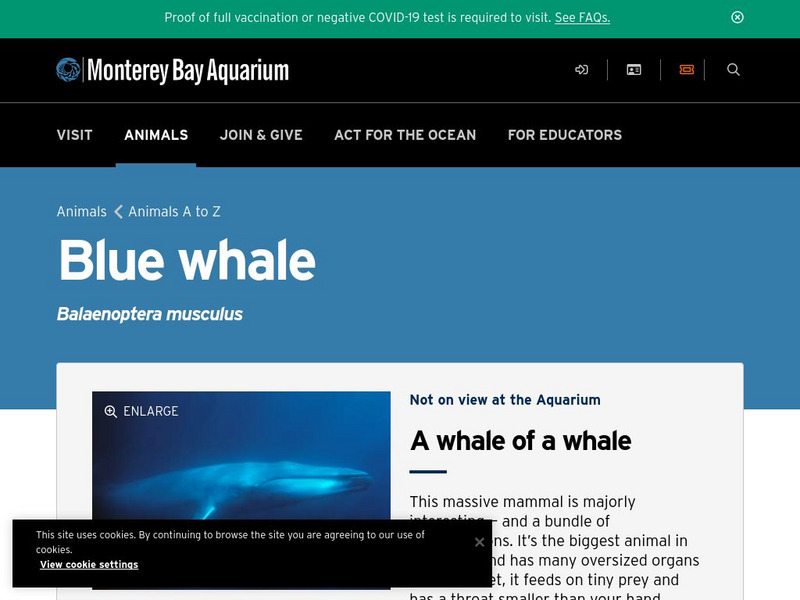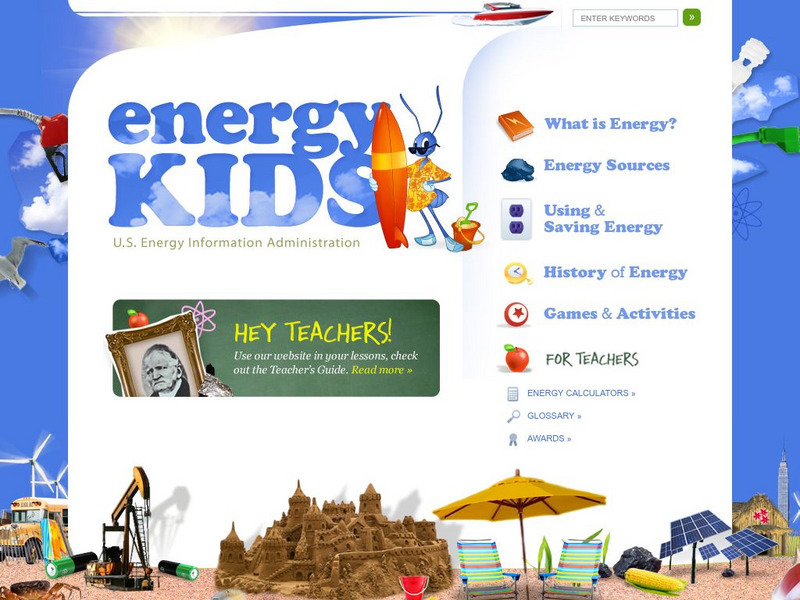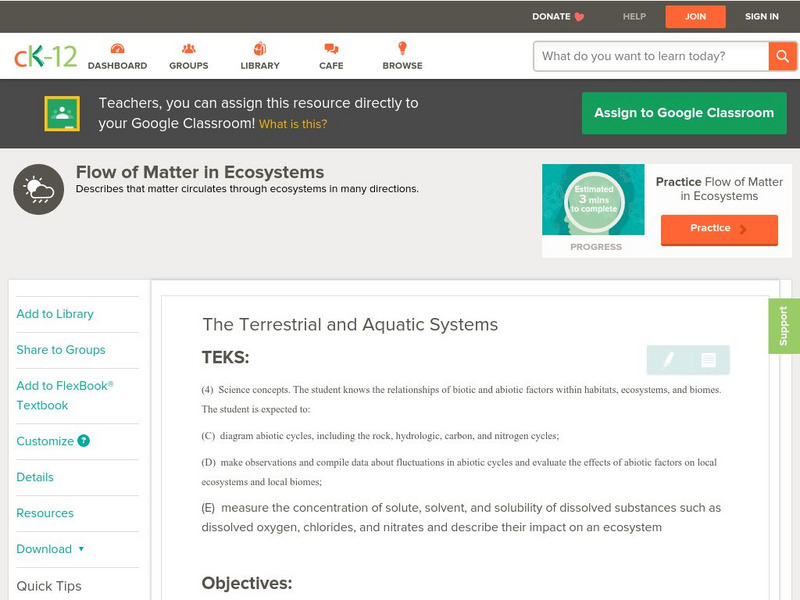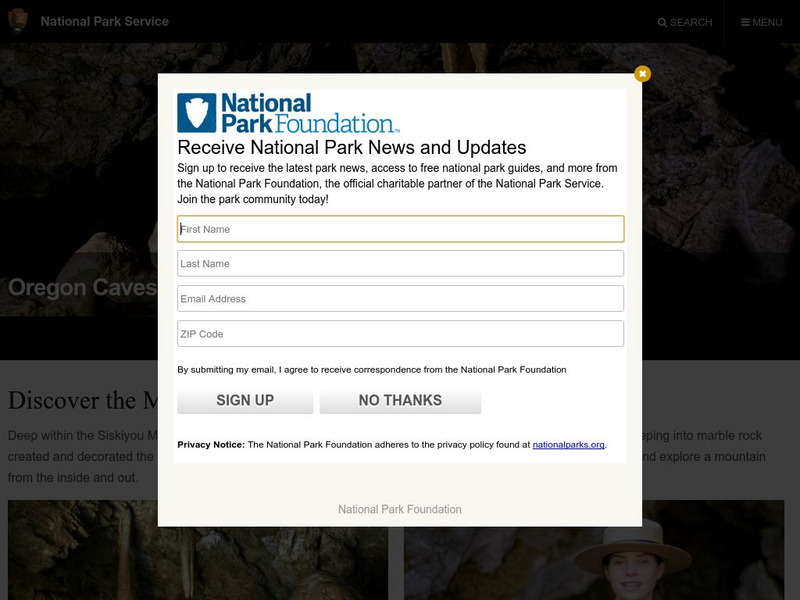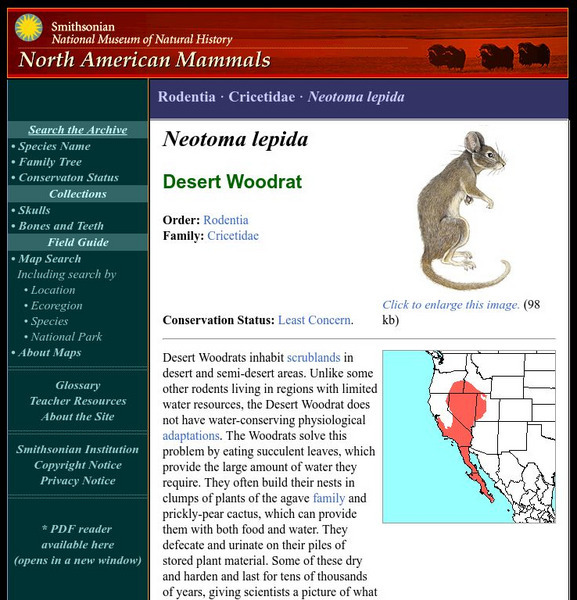Columbia University
The Earth Institute at Columbia University
Bringing people together to discuss Earth's environmental problems, The Earth Institute addresses climate change, environmental degradation, poverty, disease, and sustainable use of resources.
Other
North Carolina Department of Energy and Natural Resources: Dirt Can Be Dirty
Did you know that the #1 pollutant in North Carolina is dirt? When soil is washed into streams and river, it smothers small animals and fish by clogging their gills. Look for bare patches of ground around your home and around your school...
Other
Wildlands League
Wildlands League is a registered charity in Ontario, and a chapter of the Canadian Parks and Wilderness Society (CPAWS). It aims to preserve wilderness areas and the biological diversity of lakes, forests, rivers, grasslands and...
Center for Educational Technologies
Nasa Classroom of the Future: Florida Everglades
This site is full of information and activities to help learn about the Florida Everglades, a unique wetland environment, and its future.
My Science Site
Life Systems: Cells, Tissues, Organs
Extensive site for teachers provides some helpful resources that pertain to plant and animal cells. Includes a microscope diagram as well as plant, animal and pond labs. Also contains links to structures and mechanisms, matter and...
PBS
Pbs Learning Media: The Spokane Valley Rathdrum Prairie Aquifer
This site provides a learning module from KSPS Public Television and the Idaho Washington Aquifer Collaborative. This resource serves to educate residents of Idaho's Inland Northwest residents about the importance of protecting their...
US Environmental Protection Agency
Epa: The Case of the Mysterious Renters [Pdf]
Let your young scholars discover how much water they use in one day. Then allow them to brainstorms ideas on how to conserve that water and why it is important. PDF format.
Other
Abc Da Energia
ABC Da Energia describes the many ways that energy can be obtained and conserved. It explains different sources of energy, how each works, and how energy can be saved in our daily lives. Interactive energy-saving activities and games...
Monterey Bay Aquarium
Monterey Bay Aquarium
This resource is the homepage of the Monterey Bay and the Monterey Bay Aquarium.
Monterey Bay Aquarium
Monterey Bay Aquarium: Blue Whale (Balenoptera Musculus)
Resource that gives information on the diet, range, relatives of the blue whale. Conservation notes and cool facts are also included. There are links to similar information on dozens of other types of marine life.
Canadian Wildlife Federation
Hinterland Who's Who: Western Garter Snake
Get the facts about the western garter snake. Besides finding a detailed description of second most common snake, you'll also learn about some of its unique facts and characteristics. Also included in this Amphibian and Reptile Fact...
Georgia Department of Education
Ga Virtual Learning: Ap Environmental Science: Aquatic Biomes and Ecology
Students explore Earth's most important natural resource, water, and learn about how the planet's aquatic biomes thrive and support life.
National Geographic
National Geographic: Energy Solutions: Tapping Into Topography of Lake Turkana
In this lesson, students read and analyze articles about the alkaline water in Lake Turkana in Kenya, and about a wind energy project near Lake Turkana. They then examine the many factors that must be considered when undertaking this...
PBS
Wnet: Thirteen: Eco Challenges
Research and report on two pressing environmental concerns in Africa: the scarcity of clean water and the desertification of farmland. Respond to these issues through activities involving art, drama and journalism.
US Energy Information Administration
U.s. Eia Energy Kids
This extensive resource provides information on renewable energy, nonrenewable energy and energy conservation.
Science Education Resource Center at Carleton College
Serc: Epa's Environmental Education Center
A collection of fact sheets, brochures, and web pages about environmental issues. Topics include acid rain and air pollution, ecosystems, human health, waste and recycling, conservation, and water-related concepts and issues.
Other
Linking Environment and Farming: Simply Sustainable Soils [Pdf]
With increasing pressure on the world's natural environment and resources it is essential that we develop farming systems that have a low impact on the environment, and are also highly productive in meeting the needs of a growing global...
CK-12 Foundation
Ck 12: Earth Science: Flow of Matter in Ecosystems
[Free Registration/Login may be required to access all resource tools.] In this module, students will learn about the cycles of nature (water, carbon, nitrogen, and phosphorus) that support the flow of nutrient matter through an...
Curated OER
National Park Service: Oregon Caves
Explore the Oregon caves when you visit this informative site. This resource features links to facts, kid's activities, and more.
NASA
Nasa: Climate Kids: Waterwise Landscaper
A conversation with Michelle Pekko-Seymoure, and landscaper who grows plants that need very little water. Learn about this growing practice which helps conserve one of our most important resources.
Science Education Resource Center at Carleton College
Serc: Microbial Life: Los Angeles and the Future of Mono Lake: Web Quest
Student WebQuest studying biodiversity, preservation, and natural history. Students act as political advisors exploring Mono Lake's life forms the impact humans have on the environment. After researching the issues, students create a...
abcteach
Abcteach: Earth Day Activities
[Free Registration/Login Required] How can you treat the earth with more respect? Check out this resource featuring links to elementary activities to celebrate Earth Day. You will find word searches, crossword puzzles, reading...
Smithsonian Institution
National Museum of Natural History: American Mammals: Desert Woodrat
Desert Woodrats inhabit scrublands in desert and semi-desert areas. Unlike some other rodents living in regions with limited water resources, the Desert Woodrat does not have water-conserving physiological adaptations. Learn more about...
eSchool Today
E School Today: Solutions to the Ocean Acidification Problem
Understand the ocean acidification problem, and find out what you can do about it.
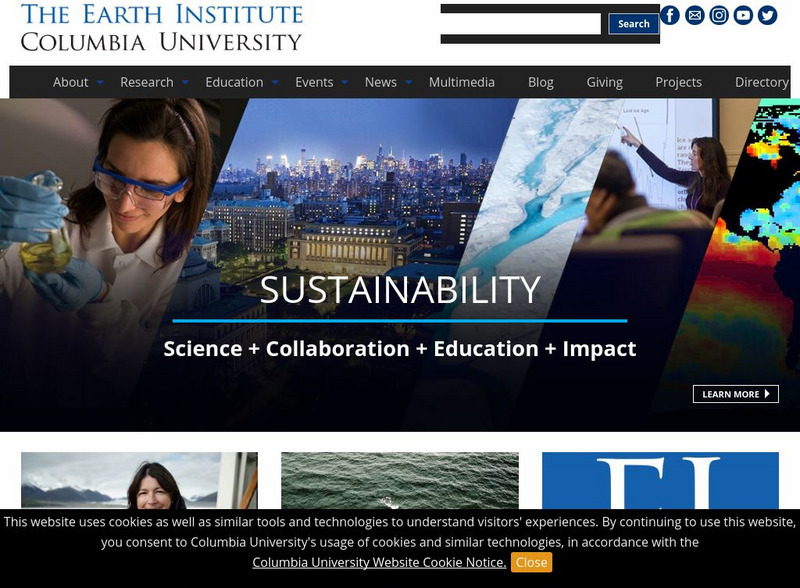



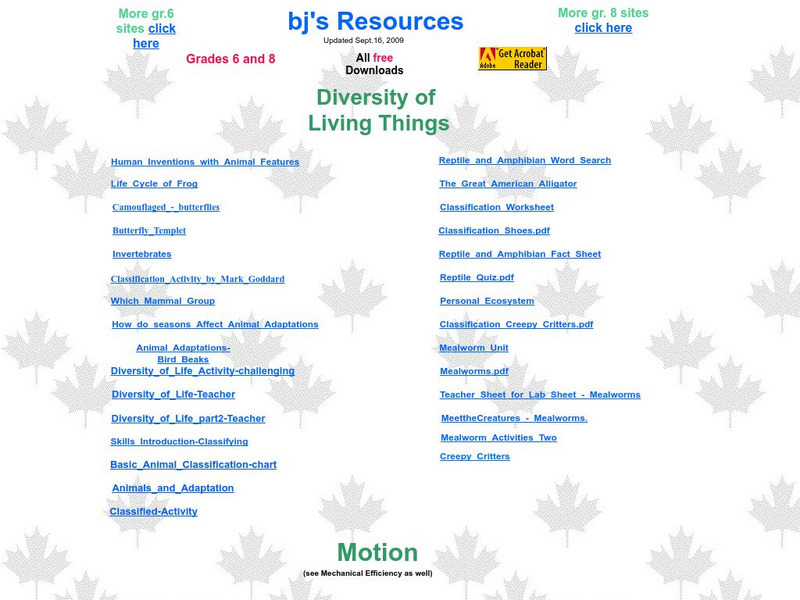
![Epa: The Case of the Mysterious Renters [Pdf] Lesson Plan Epa: The Case of the Mysterious Renters [Pdf] Lesson Plan](https://content.lessonplanet.com/knovation/original/29099-b3e19dc747925851b4f458b1482def5e.jpg?1661255997)


